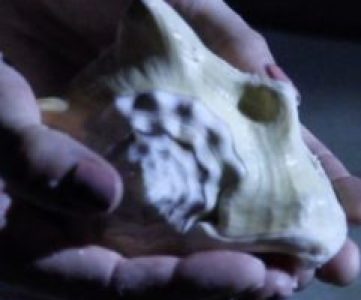Multisensory Wellbeing on/by the Water
TT Journal, ISSUE 4, 12th September 2022
By Charles Spence
Abstract
Many of us intuitively recognize the health and well-being benefits of being out on the water boating. But what does science have to say about the social, cognitive, emotional, and physical health benefits of being exposed to nature in what has been referred to as the ‘blue gym’. The growing literature on the ‘nature effect’ shows how even a very brief exposure to the sight, sound, smell, or feel of nature can have a beneficial effect on our physical health and mental well-being. Getting out into nature more (e.g., onto the water) is especially important when you realize that we spend something like 95% of our lives indoors, leading to problems such as light hunger, a mild form of seasonal affective disorder.[1]
In this review, Charles Spence, Professor of Experimental Psychology at Oxford University, and author of Sensehacking: How to use the power of your senses for happier, healthier living (2021; Penguin), evaluates the scientific basis for the health and well-being benefits of engaging with nature outdoors while out on the water with all the senses.[2]
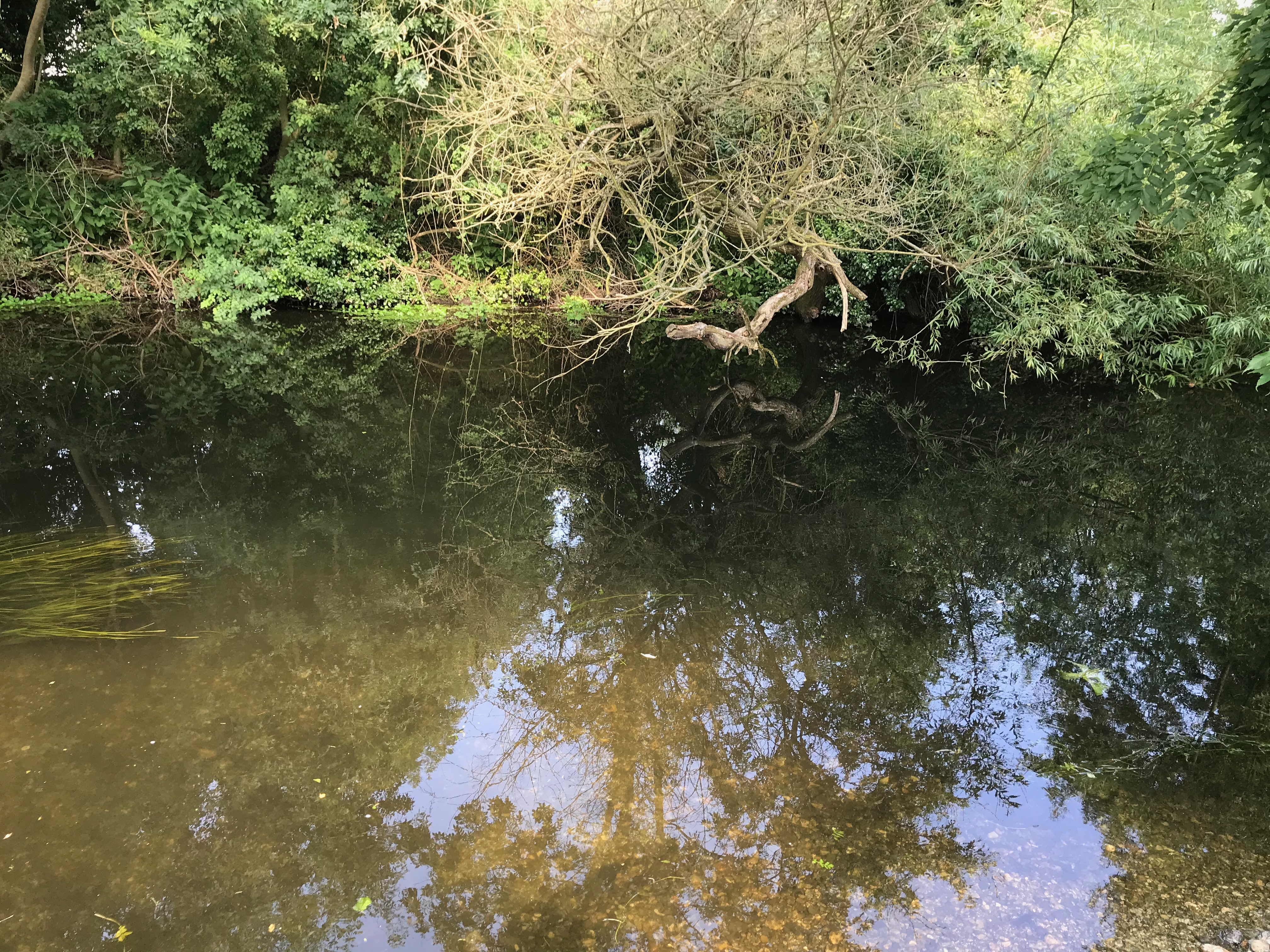
The vitalizing outdoors and the nature effect
A growing body of empirical research now demonstrates the profound health benefits of getting out into the fresh air/nature.[3] It is, according to research from Ryan and colleagues, ‘vitalizing’. The latter claim was based on five research studies conducted using survey, experimental, and diary methods to assess the beneficial effect of being outdoors on people’s subjective feelings of vitality (defined as having physical and mental energy). Should we be able to get out into nature (rather than being stuck outdoors in an urban environment) then the physiological and psychological benefits for our well-being are likely to be even greater. This boost to our mental and physical well-being is known as the ‘nature effect’.[4] What is more, the benefits of spending time outdoors appear to be both profound and fast-acting.[5] According to some of the latest research from Germany, even short periods of time outdoors can lead to measurable changes in brain structure and improved mood, with a likely knock-on effect on our ability to concentrate, our working memory, and our psyche. Kühn et al. conducted a longitudinal study in which they took 281 brain scans (using magnetic resonance imaging, MRI) of six healthy, middle-aged city-dwellers over a 6-8 month period. They were able to demonstrate the fast-acting beneficial effects of exposure to nature on brain structure. The focus of the study was on self-reported behaviour during the last 24 hours and, in particular, on the number of hours that the participants had spent outdoors prior to their neuroimaging session. According to the researchers involved, if you’re regularly out in the fresh air, you’re doing something good for both your well-being and your brain.[6]
According to a meta-analysis of more than 140 studies conducted around the globe involving 290 million people reported by Twohig-Bennett and Jones, living close to nature and spending time outdoors delivers significant and wide-ranging health benefits.[7] Including data from 20 countries (such as the UK, the US, Spain, France, Germany, Australia and Japan), the researchers compared the health of people with little access to outdoor green spaces compared to that of those individuals with the highest amounts of exposure. According to their results, exposure to ‘greenspace’[8] reduces the risk of type II diabetes, cardiovascular disease, premature death, preterm birth, stress, and high blood pressure. Furthermore, those populations with higher levels of exposure to greenspace were also more likely to report good overall health and increased sleep duration. The results of this meta-analysis therefore unambiguously demonstrate that spending time in, or living close to, natural green spaces is associated with diverse and significant health benefits, significantly reducing diastolic blood pressure, heart rate, and physiological levels of stress, as indicated by levels of salivary cortisol. No wonder, then, that according to a growing number of healthcare professionals, one of the simplest, not to mention most cost effective, ways to reduce the nearly 12 million working days are lost every year in the UK due to stress, depression or anxiety is to get out into nature, better still, as we will see in a moment, if we can get out onto the water.
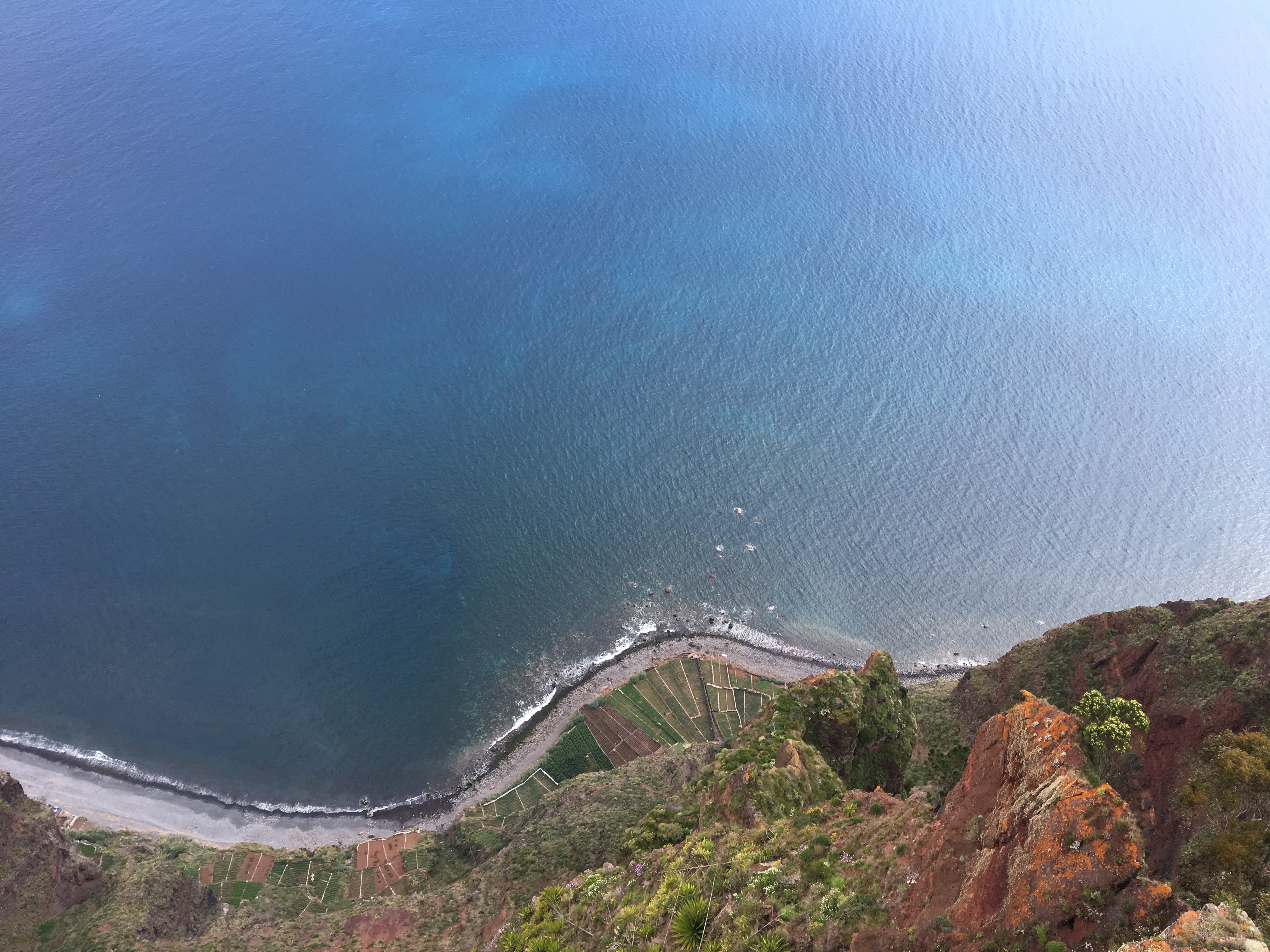
On the benefits of the ‘blue gym’
Several different theories have been put forward to explain the profound effects that contact with nature can have including the biophilia hypothesis[9] and ‘attention restoration theory’.[10] A third suggestion is that nature may simply be less threatening and thus less arousing, meaning that people find it easier recovery from stress through an autonomic response to nature.[11] Potentially even more beneficial for our well-being, though, is to get out close to the water. This is the so-called ‘blue gym’ effect.[12] There may also be something about the shimmering surface of water glistening in the sunlight that our visual systems are drawn to. Indeed, it has even been suggested that it is our seemingly innate affinity for water (essential as it is for survival) that explains our appreciation of shiny metals like silver and gold.[13] Meanwhile, around the world, blue and green always tend to come out as people’s favourite colours.[14] Intriguingly, research from New Zealand showed that those individuals living in residential areas of Wellington, New Zealand, with high levels of blue space visibility were less psychologically distressed than those with a view of green space instead.[15] These results are consistent, therefore, with a growing body of research that tends to show that so-called blue space may have even greater health and well-being benefits than green space.[16] At the same time, hotel rooms and residential property prices tend to be 20-40% higher when they have a view of the beach/water.[17] Of course, go far enough back in time, and the world was mostly blue rather than green.[18]
While the nature effect and the blue gym are often considered in terms of vision (perhaps unsurprising given that we are so visually dominant),[19] there is nevertheless a growing awareness of just how important the sounds of water and wildlife (i.e., fauna, most often birds)[20] are to the beneficial effects of experience of nature. This captured long ago by Henry David Thoreau who writes, in Walden (Thoreau, 1983; c.1850) that: “I hear the sound of Heywood’s brook falling into Fair Haven Pond—inexpressibly refreshing to my senses—it seems to flow through my very bones.—I hear it with insatiable thirst—It allays some sandy heat in me—It affects my circulations—methinks my arteries have sympathy with it. What is it I hear but the pure water falls within me in the circulation of my blood—the streams that fall into my heart?”[21] The sounds of water (e.g., fountains) have long been used to prime thoughts of coolness in hot climate (e.g., Arabic) gardens.[22] This, a very different view from the one expressed by Huth (1957), who detested wild landscapes such as Niagara Falls, describing it as “hideous, outrageous, terrible”.[23] At the same time, however, it should also be noted that the worrying fact of the matter is that the sonic wonders of nature (i.e., the sonic biodiversity) are rapidly being eroded by human activity.[24]
Intriguingly, the results of the latest research (once again involving a systematic review and meta-analysis of the literature) conducted in national parks across North American revealed that the sounds of water had the biggest positive effect (i.e., the largest mean effect size) on health and positive affect outcomes.[25] Bird song, by contrast, was found to have a larger effect on reducing stress and annoyance. Separately, water sounds have also been shown to provide an effective foil to the stress-inducing anthropogenic noise of urban, typically transport, activities.[26]
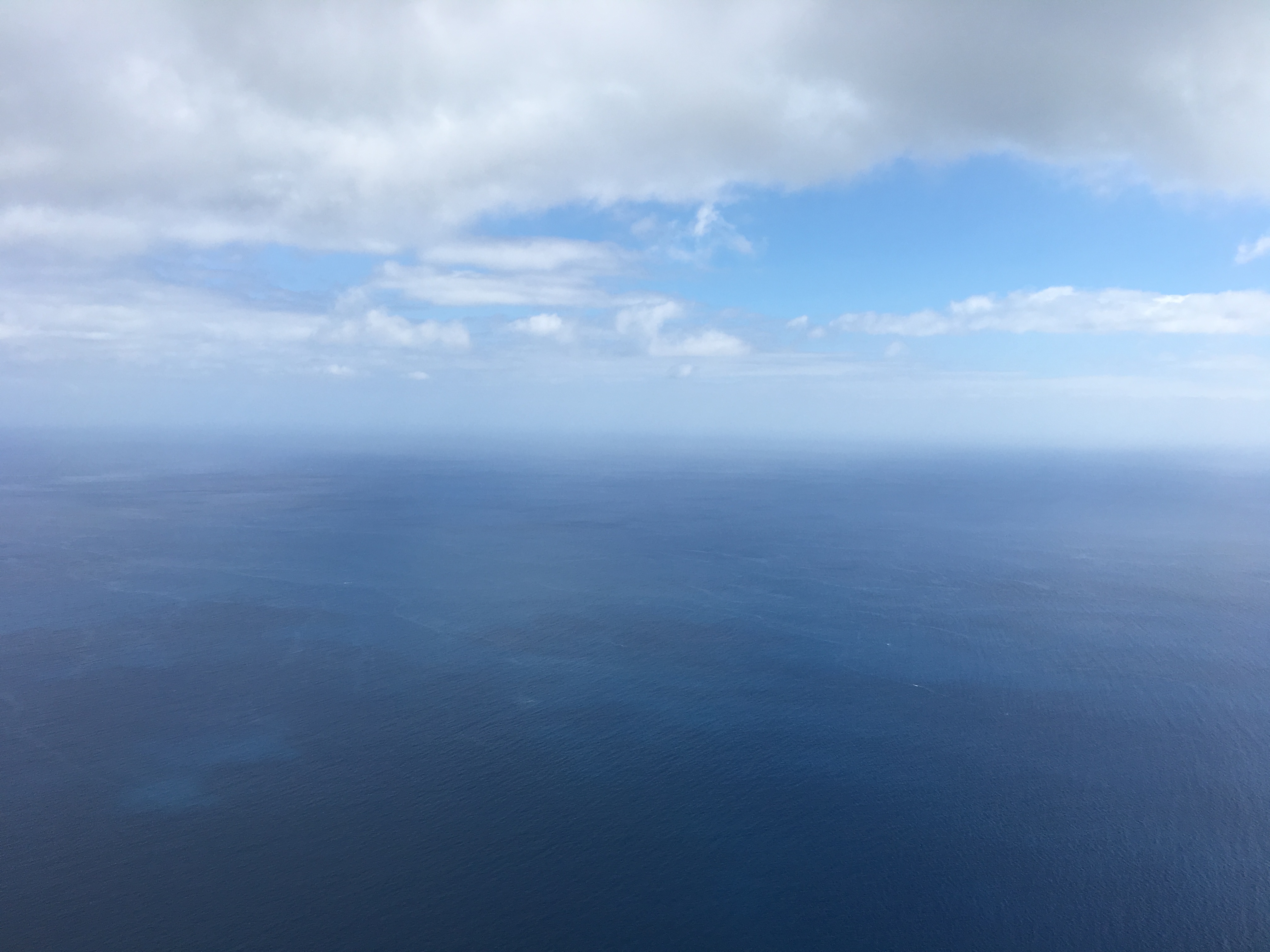
On the benefits of seaside air
Beyond the benefits of looking at and listening to nature, one should probably also ask about the impact of the smells of nature,[27] and of being close to water, on our mental and physical well-being. Here, in particular, there appears to be benefits of ozone from being close to sea, with negative ions being given off by large bodies of water (e.g., at the seaside). The ozone is probably what is more beneficial for us physiologically than the tangy smell of the sea. The latter is caused by the release of dimethyl-sulphide (DMS) from the breakdown of bacteria, and as we have just seen may be linked to psychological benefits due to its association with happy, healthy memories.[28] Being by the seaside has a restorative and sleep-enhancing function, as was well understood by those Victorian doctors who would often send their patients off to the coast to recuperate.[29] The human immune system likely also benefits from increased exposure to biodiversity (to microorganisms in bacteria, protozoa, helminths, etc.) when out in nature.[30] Research commissioned by Haven Holidays a few years ago revealed that nearly half (47%) of Brits agreed that smell is the most powerful sense as far as evoking the positive feeling of being by the seaside; Smelling the sea breeze (38.8%) was found to be the favourite thing for Brits to do at the coast, according to the results of this survey of several thousand individuals.[31] Furthermore, when people were offered the smells of various places from a vending machine as part of an advertising campaign a few years ago, the smell of the salty sea air came high-up the list of people’s preferences.[32] The smell of oceans, seas, water, sea salt, or even nature-related smells such seaweed, presumably even a candle that smells of sea salt, would likely have a beneficial effect on us, by reminding us of happy times on the water.[33] As one affective neuroscientist put it: “The experience of being in or beside the ocean is one filled with complex emotion based on the brain’s response to environmental stimuli.”[34]
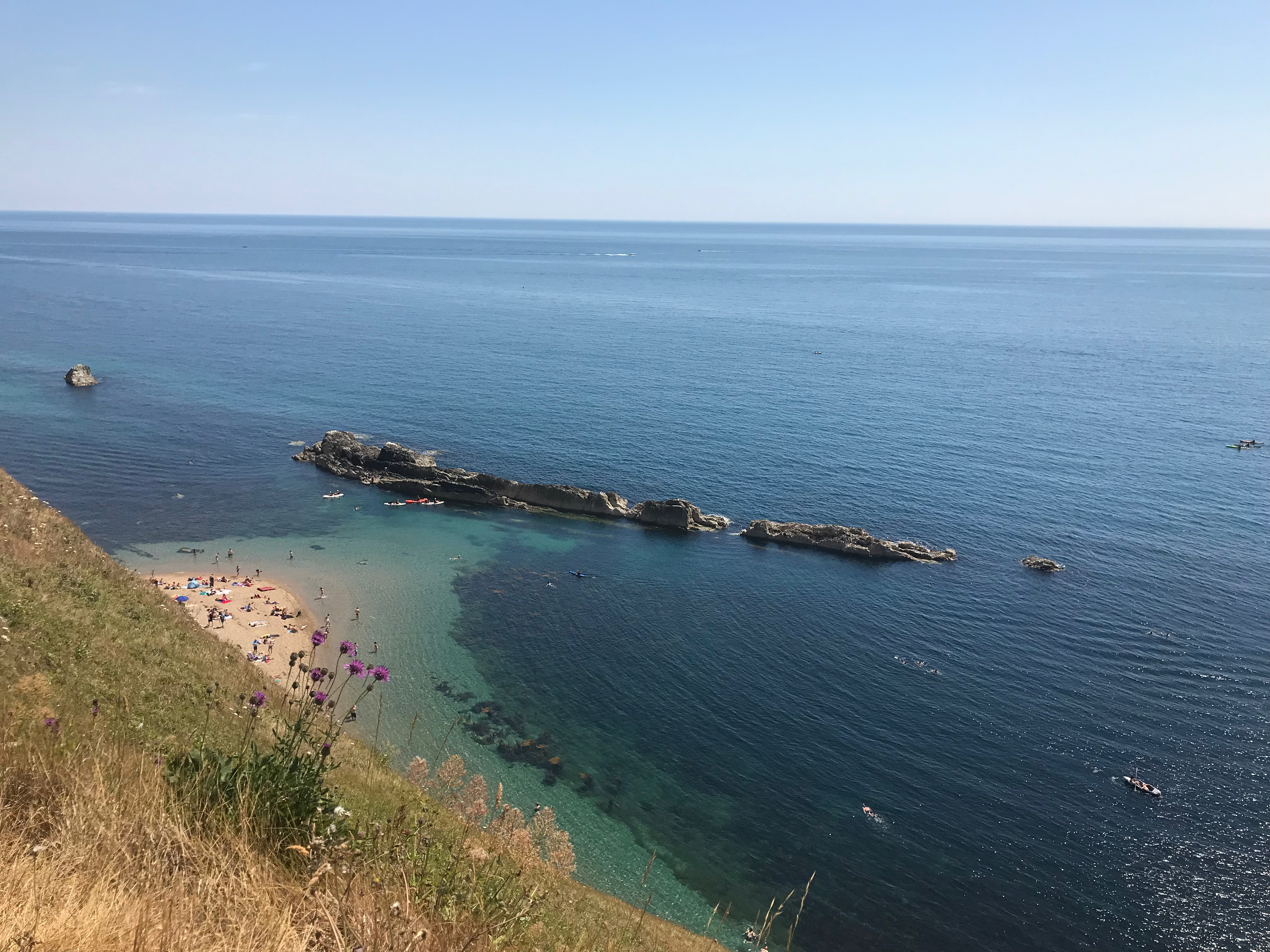
The benefits of being on the water
Thus far, we have seen how being close to water, and experiencing the sights, sounds, and smells, of nature are beneficial for our physical and emotional well-being. But, one might ask, is there anything special about being literally on the water rather than simply just being close to it? The answer is likely to be in the affirmative. In part, this links to increasingly popular notions of ‘embodied cognition’ – the basic idea being that we think with, and through, our bodies (and not just with our brains).[35] Being on the water likely promotes proprioceptive / bodily awareness (given that we presumably need to pay attention to maintain our balance). Being out on the water may thus encourage a kind of mindful presence in the activity involved.[36] There is, I believe, also a very real pleasure associated with our attention being drawn to the bodily senses (e.g., touch and proprioception).[37] People also find it easier to exercise when out in nature, and the benefits on physical and mental well-being tend to be greater too.[38] Navigating on the water presumably also requires more attention to one’s surroundings than simply walking, an activity that we can almost do on autopilot (i.e., without thinking about the body). Being mindful in the moment also enhances what we get from the multisensory experience of boating.[39] There is also a growing sense in society at large that our increasingly digital/online (and hence primarily audiovisual) existence is leading to an increased neglect of the bodily senses, and bodily awareness.[40] In this regard, it is interesting to note the recent suggestion from marine biologist Dr. Wallace Nichols that children may find it easier to disconnect from their technology while boating.[41]
In a very real sense, then, being on a boat on the water is likely to be even more beneficial than simply looking at, or even walking by, the water. Being on a boat is more beneficial both because of the likely exercise involved, and perhaps more importantly, the drawing of attention to balance and the body. And, given the independent body of research showing that being close to wood also exerts a beneficial effect on us, one might even consider therefore the beneficial effects of standing/sitting on the wooden decking of so many boats might also be beneficial in its own right.[42]
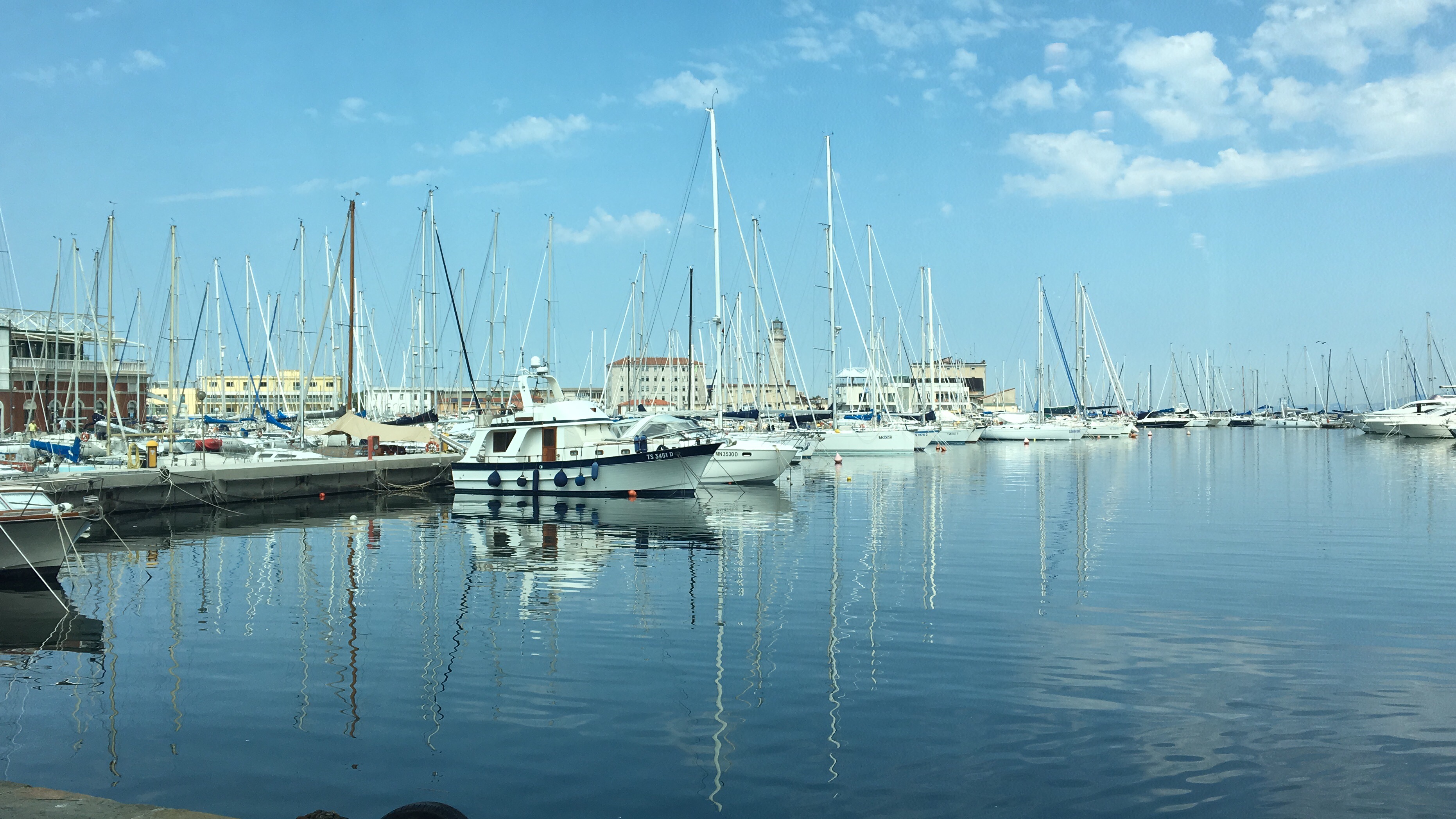
Nostalgic memories of the seaside
For those of us who grew up in the UK, thoughts of the seaside often tend to be imbued with a positive sense of nostalgia. The sights, sounds, and smells of the sea are likely to remind many of us of our happy childhood holidays.[43] Hence, even when we are not actually on, or by, the water, the sensory cues that we associate with such relaxing, joyful, and also healthy activities can all help to trigger the positive memories and nostalgia.[44] Warm emotions are what these happy multisensory memories evoke for so many of us which, in turn, can promote the production of the happy hormone serotonin. For instance, my colleagues have recorded spinnakers tinkling in the breeze, and that distinctive sound powerfully evokes the sense of being by the water for me, and I suspect many others.[45] Here, one might also consider the sound of the wind in the sails, the sound of lapping water, the sound of tapping and rustling sails, as sounds that are redolent of being by/by the water. Some have even gone so far as to suggest that the rhythmical sounds of the waves crashing on the beach might remind us of the sound we heard first in life when we were in the womb. In decades gone by, relaxing sounds from the seaside have even been played in psychiatric hospitals in North America in order to help calm the agitated patients at mealtimes.[46] These sensory cues may well have a calming effect on people, even when they are away from the water. Similarly, beneficial effects of listening to of ocean and water fountain sounds have been reported in those recovering from surgery as well as in those awaiting dental treatment.[47]
We can be transported by any one of our senses, but often it is smell that appears to have the strongest effect on our mood and emotions. What is more, exposure to positive scents appears to have a particularly profound effect on our well-being under those conditions in which we ourselves are more stressed, as is likely to have been the case for many of us following the recent Covid pandemic.[48] When considering the nostalgic impact that simply smelling the sea can have, it is worth noting the much more direct connection that exists between the nose and those parts of the brain coding for emotion and memory than exists for any of the other senses.[49] In other words, Proust really was on to something when, some many years ago, the novelist talked about the smell of the Madeleine dunked in linden tea taking the novel’s narrator back to a long-ago past.[50] Crucially, the research provides support for the powerful ability of smells to trigger memories and emotions.[51]
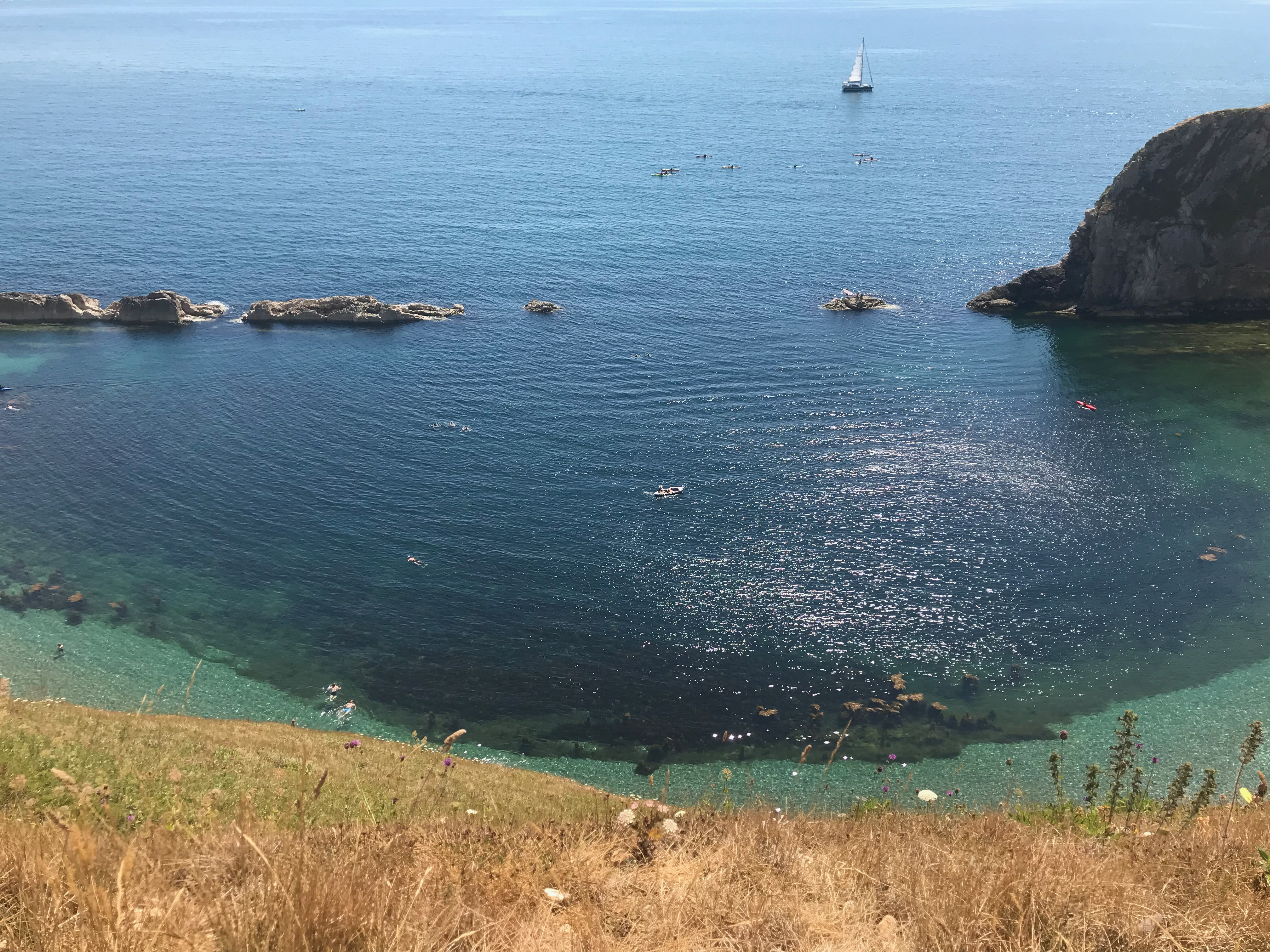
Conclusions: Multisensory well-being and boating
Ultimately, therefore, one doesn’t need to buy into the ‘aquatic ape hypothesis’[52] to recognize the profound benefits of being close to, and perhaps better still, on, the water for our social, cognitive, emotional, and physical well-being.[53] The biggest benefits are likely to accrue from fully engaging with the experience through all of our senses (i.e., and making sure not to be distracted by our technology).[54] The benefits are likely both psychological and well as physiological in nature (and origin), and have been traced back by some commentators to the evolutionary importance of water for human survival.[55] The nostalgic element triggered by being in/on, or by exposure to the sensory cues that remind us of, being on the water (and possibly also happy childhood holidays/memories) should not be neglected either. Ultimately, the many physical and mental well-being benefits associated with being out on the water are likely have several causes. These include the benefits from the physical exercise that is normally associated with being outdoors/on the water,[56] the social interaction, planned or otherwise,[57] as well as the therapeutic, or salutogenic, benefits of exposure to blue (and green) nature. The marine biologist Wallace J. Nichols whom we came across earlier captured the idea perfectly in the title of his book Blue mind: How water makes you happier, more connected and better at what you do. All of that before one considers the likely reduction in exposure to urban pollution (both noise and olfactory) and the increased opportunity for Vitamin D, hence alleviating the symptoms of light hunger that so many of us suffer in winter months.[58] Taken together, the various multisensory cues associated with boating likely have a direct effect on our biology (even our brain structure, physiology, and psychology).
References
[1] Spence, C. (2002). The ICI report on the secret of the senses. London, UK: The Communication Group.
[2] Spence, C. (2021). Sensehacking: How to use the power of your senses for happier, healthier living. London, UK: Viking Penguin. https://www.penguin.co.uk/books/308513/sensehacking/9780241361139.html.
[3] Ottoson, J., & Grahn, P. (2005). A comparison of leisure time spent in a garden with leisure time spent indoors: On measures of restoration in residents in geriatric care. Landscape Research, 30, 23-55; Ryan, R. M., Weinstein, N., Bernstein, J., Brown, K. W., Mistretta, L., & Gagné, M. (2010). Vitalizing effects of being outdoors and in nature. Journal of Environmental Psychology, 30(2), 159-168. https://doi.org/10.1016/j.jenvp.2009.10.009; Tejada, C. (2019). Fresh air from the big outdoors has lasting health benefits: Go ahead and take a deep breath. Huffington Post, November 11th. https://www.huffpost.com/archive/ca/entry/benefit-of-fresh-air_ca_5dc96bf9e4b0fcfb7f6a0d82.
[4] See Williams, F. (2017). The nature fix: Why nature makes us happier, healthier, and more creative. London, UK: W. W. Norton & Company; Frumkin, H., Bratman, G. N., Breslow, S. J., Cochran, B., Kahn, P. H., Jr., Lawler, J. J., Levin, P. S., Tandon, P. S., Varanasi, U., Wolf, K. L., & Wood, S. A. (2017). Nature contact and human health: A research agenda. Environment Health Perspective, 125:075001. https://doi.org/10.1289/EHP1663; Hartig, T., Mitchell, R., De Vries, S., & Frumkin, H. (2014). Nature and health. Annual Review of Public Health, 35, 207-228; Mackerron, G., & Mourato, S. (2013). Happiness is greater in natural environments. Global Environmental Change, 23, 992-1000.
[5] Kühn, S., Mascherek, A., Filevich, E., Lisofsky, N., Becker, M., Butler, O., Lochstet, M., Mårtensson, J., Wenger, E., Lindenberger, U., & Gallinat, J. (2021). Spend time outdoors for your brain – an in-depth longitudinal MRI study. The World Journal of Biological Psychiatry, 1, 1-7. DOI: 10.1080/15622975.2021.1938670.
[6] In particular, brain scans revealed that the amount of time spent outdoors by the participants was positively related to gray matter volume in the dorsolateral-prefrontal cortex (DLPFC), an area involved in the planning and regulation of actions as well as what is referred to as cognitive control. Crucially, the results persisted even when other factors that could have explained the relationship between time spent outdoors and brain structure such as sunshine duration, number of hours of free time, physical activity, and fluid intake were factored out of the analysis.
[7] Twohig-Bennett, C., & Jones, A. (2018). The health benefits of the great outdoors: A systematic review and meta-analysis of greenspace exposure and health outcomes. Environmental Research, 166, 628-637. https://doi.org/10.1016/j.envres.2018.06.030.
[8] Defined as open, undeveloped land with natural vegetation as well as urban greenspaces, which included urban parks and street greenery.
[9] Wilson, E. O. (1984). Biophilia. London, UK: Harvard University Press; See also Kellert, S. R., & Wilson, E. O. (Eds.). (1993). The biophilia hypothesis. Washington, DC: Island Press.
[10] Kaplan, S. (1995). The restorative benefits of nature: Toward an integrative framework. Journal of Environmental Psychology, 15, 169-182; Kaplan, R., & Kaplan, S. (1989). The experience of nature: A psychological perspective. New York, NY: Cambridge University Press; See also Hipp, J. A., & Ogunseitan, O. A. (2011). Effect of environmental conditions on perceived psychological restorativeness of coastal parks. Journal of Environmental Psychology, 31(4), 421-429; Ohly, H., White, M. P., Wheeler, B. W., Bethel, A., Ukoumunne, O. C., Nikolaou, V., & Garside, R. (2016). Attention restoration theory: A systematic review of the attention restoration potential of exposure to natural environments. Journal of Toxicology & Environmental Health B: Critical Reviews, 19(7), 305-343; Stevenson, M. P., Schilhab, T., & Bentsen, P. (2018). Attention restoration theory II: A systematic review to clarify attention processes affected by exposure to natural environments. Journal of Toxicology & Environmental Health B: Critical Reviews, 21(4), 227-268.
[11] Ulrich, R. S., Simons, R. F., Losito, B. D., Fiorito, E., Miles, M. A., & Zelson, M. (1991). Stress recovery during exposure to natural and urban environments. Journal of Environmental Psychology, 11, 201-230.
[12] Depledge, M. H., & Bird, W. J. (2009). The blue gym: Health and wellbeing from our coasts. Marine Pollution Bulletin, 58, 947-948.
[13] Spence, C., Carvalho, F., & Howes, D. (2021). Metallic: A bivalent, ambimodal material property? i-Perception, 12(4):1-33. https://doi.org/10.1177/20416695211037710; See also Meert, K., Pandelaere, M., & Patrick, V. M. (2014). Taking a shine to it: How the preference for glossy stems from an innate need for water. Journal of Consumer Psychology, 24, 195-206.
[14] It has also been suggested that blue and green are the most prominent colours in calendar pictures: Berger, J. (1972). Ways of seeing. London, UK: Penguin; Cf. Herzog, T. R. (1985). A cognitive analysis of preference for waterscapes. Journal of Environmental Psychology, 5, 225-241. http://dx.doi.org/10.1016/S0272-4944(85)80024-4.
[15] Nutsford, D., Pearson, A. L., Kingham, S., & Reitsma, F. (2016). Residential exposure to visible blue space (but not green space) associated with lower psychological distress in a capital city. Health & Place, 39, 70-78. http://dx.doi.org/10.1016/j.healthplace.2016.03.002.
[16] Gascon, M., Triguero-Mas, M., Martínez, D., Dadvand, P., Forns, J., Plasència, A., & Nieuwenhuijsen, M. J. (2015). Mental health benefits of long-term exposure to residential green and blue spaces: A systematic review. International Journal of Environmental Research and Public Health, 12(4), 4354-4379. https://doi.org/10.3390/ijerph120404354; Karmanov, D., & Hamel, R. (2008). Assessing the restorative potential of contemporary urban environment(s): Beyond the nature versus urban dichotomy. Landscape & Urban Planning, 86, 115-125. http://dx.doi.org/10.1016/j.landurbplan.2008.01.004; Ulrich, R. (1981). Natural versus urban scenes: Some psychophysiological effects. Environment and Behavior, 13, 523-556. http://dx.doi.org/10.1177/0013916581135001; Völker, S., & Kistemann, T. (2011). The impact of blue space on human health and well- being – Salutogenetic health effects of inland surface waters: A review. International Journal of Hygiene & Environmental Health, 214, 449-460. http://dx.doi.org/10.1016/j.ijheh.2011.05.001; Völker, S., & Kistemann, T. (2013). “I’m always entirely happy when I’m here!” Urban blue enhancing human health and well-being in Cologne and Düsseldorf, Germany. Society Science and Medicine, 78, 113-124. http://dx.doi.org/10.1016/j.socscimed.2012.09.047; White, M., Alcock, I., Wheeler, B. W., & Depledge, M. (2013). Coastal proximity, health and well-being: Results from a longitudinal panel survey. Health & Place, 23, 97-103. http://dx.doi.org/10.1016/j.healthplace.2013.05.006; White, M., Smith, A., Humphryes, K., Pahl, S., Snelling, D., & Depledge, M. (2010). Blue space: The importance of water for preference, affect, and restorativeness ratings of natural and built scenes. Journal of Environmental Psychology, 30, 482-493. http://dx.doi.org/10.1016/j.jenvp.2010.04.004; cf. https://www.today.com/health/blue-spaces-beat-green-spaces-when-it-comes-mental-health-t90601.
[17] Christie, L. (2012). Floating homes: What it costs to live on the water. CNN Money, June 15th. https://money.cnn.com/2012/06/15/real_estate/floating-home/index.htm; Luttik, J. (2000). The value of trees, water and open space as reflected by house prices in the Netherlands. Landscape and Urban Planning, 48(3-4), 161-167; Seiler, M. J., Bond, M. T., & Seiler, V. L. (2001). The impact of world class Great Lakes water views on residential property values. Appraisal Journal, 69(3), 287-295.
[18] Lane, N. (2010). Life ascending. Profile Books.
[19] Gallace, A., Ngo, M. K., Sulaitis, J., & Spence, C. (2012). Multisensory presence in virtual reality: Possibilities & limitations. In G. Ghinea, F. Andres, & S. Gulliver (Eds.), Multiple sensorial media advances and applications: New developments in MulSeMedia (pp. 1-38). Hershey, PA: IGI Global; Hutmacher, F. (2019). Why is there so much more research on vision than on any other sensory modality? Frontiers in Psychology, 10:2246. doi: 10.3389/fpsyg.2019.02246.
[20] E.g., Ratcliffe, E., Gatersleben, B., & Sowden, P. T. (2013). Bird sounds and their contributions to perceived attention restoration and stress recovery. Journal of Environmental Psychology, 36, 221-228; See also Bates, V., Hickman, C. Manchester, H., Prior, J., & Singer S. (2020). Beyond landscape’s visible realm: Recorded sound, nature, and wellbeing. Health and Place, 61:102271.
[21] Thoreau, H. D. (1983; c. 1850). Walden and other writings (Ed. J. W. Krutch). New York, NY: Bantam Dell.
[22] Campbell, G. (2016). A short history of gardens. Oxford, UK: Oxford University Press; Heschong, L. (1979, p. 23, pp. 29-30). Thermal delight in architecture. Cambridge, MA: MIT Press; Spence (2021); And see Malnar, J. M. (2006). Crown Fountain: A sensible place. The Senses & Society, 1(1), 101-104, on multisensory fountains.
[23] Hith, H. (1957). Nature and the American. Berkeley, CA: University of California Press.
[24] Haskell, D. G. (2022). The sonic wonders of our world are under threat. We need to listen. The New Scientist, May 11th. https://www.newscientist.com/article/mg25433832-000-the-sonic-wonders-of-our-world-are-under-threat-we-need-to-listen/.
[25] Buxton, R. T., Pearson, A. L., Allou, C., Fristrup, K., & Wittemyer, G. (2021). A synthesis of health benefits of natural sounds and their distribution in national parks. Proceedings of the National Academy of Sciences of the USA, 118(14):e2013097118. https://doi.org/10.1073/pnas.2013097118.
[26] Franco, L. S., Shanahan, D. F., & Fuller, R. A. (2017). A review of the benefits of nature experiences: More than meets the eye. International Journal of Environmental Research & Public Health, 14:864; Jeon, J. Y., Lee, P. J., You, J., & Kang, J. (2012). Acoustical characteristics of water sounds for soundscape enhancement in urban open spaces. Journal of the Acoustical Society of America, 131, 2101-2109; Yang, W., & Kang, J. (2005). Acoustic comfort evaluation in urban open public spaces. Applied Acoustics, 66, 211-229; Jeon, J. Y., & Hong, J. Y. (2015). Classification of urban park soundscapes through perceptions of the acoustical environments. Landscape & Urban Planning, 141, 100-111; Water-based sounds have also been introduced into the built environment to mask office noise: See Hongisto, V., Varjo, J., Oliva, D., Haapakangas, A., & Benway, E. (2017). Perception of water-based masking sounds—Long-term experiment in an open-plan office. Frontiers in Psychology, 8:1177; Spence, C. (2020). Senses of space: Designing for the multisensory mind. Cognitive Research: Principles & Implications (CRPI), 5:46. https://doi.org/10.1186/s41235-020-00243-4; https://rdcu.be/b7qIt.
[27] Byatt, A. S. (2003). How we lost our sense of smell. In M. Bragg & P. D. James (Eds.), Sightlines (pp. 257-267). London, UK: Vintage Books; Gorman, R. (2017). Smelling therapeutic landscapes: Embodied encounters within spaces of care farming. Health & Place, 47, 22-28; Spence, C. (2003). A new multisensory approach to health and well-being. In Essence, 2, 16-22.; Bentley, P. R., Fisher, J. C., Dallimer, M., Fish, R. D., Austen, G. E., Irvine, K. N., & Davies, Z. G. (2022). Nature, smells, and human wellbeing. Ambio, https://doi.org/10.1007/s13280-022-01760-w.
[28] Johnston, A. (2008). On the microbial genetics of seaside smells. Microbiology Today, 35(3), 128-131; O’Connell, S. (2009). The science behind that fresh seaside smell. A tiny molecule lurks behind the evocative smell of the seaside. The Telegraph, August 18th. https://www.telegraph.co.uk/news/science/6044238/The-science-behind-that-fresh-seaside-smell.html; Wolfe, A. (2014). Why does the sea smell like the sea? A microbiologist explores the distinctive odors of a day at the beach. Popular Science, August 19th. https://www.popsci.com/seasmells.
[29] Nichols, W. J. (2014, p. 155, 160). Blue mind: How water makes you happier, more connected and better at what you do. London, UK: Abacus.
[30] Rook, G. A. (2013). Regulation of the immune system by biodiversity from the natural environment: An ecosystem service essential to health. Proceedings of the National Academy of Sciences of the USA, 110, 18360-18367.
[31] ‘Half of parents haven’t visited a beach with their children in the last year, study finds’ (2018). Independent, May 9th. https://www.independent.co.uk/life-style/health-and-families/beach-uk-family-holiday-day-trips-children-a8340046.html.
[32] Polden, J. (2015). From sun cream to freshly cut grass! Vending machine stocked with bottles of scented air brings the smell of summer to busy train station. Daily Mail Online, August 8th. http://www.dailymail.co.uk/travel/travel_news/article-3187183/From-sun-cream-freshly-cut-grass-Vending-machine-stocked-bottles-scented-air-brings-smell-summer-busy-train-station.html.
[33] One Spanish chef has gone even further to capture the smell of the sea near his Basque country restaurant in North-West Spain: see Trebolazabala, J., & Atxa, E. (2012). Generating, entrapping and transferring natural aromas to the dish and selected environments. International Journal of Gastronomy and Food Science, 1, 107-110.
[34] Quoted in Nichols (2014, p. 55).
[35] Gallagher, S. (2005). How the body shapes the mind. Oxford, UK: Clarendon Press; Wilson, M. (2002). Six views on embodied cognition. Psychonomic Bulletin and Review, 9, 625-636.
[36] Cf. Pirsig, R. M. (1974). Zen and the art of motorcycle maintenance. London, UK: Bodley Head.
[37] Lynn, S. (2006). Fantasy lands and kinesthetic thrills. The Senses and Society, 1(3), 293-309, DOI: 10.2752/174589206778476289; Obrador-Pons, P. (2009). Building castles in the sand: Repositioning touch on the beach. Senses & Society, 4(2), 195-210.
[38] Thompson Coon, J., Boddy, K., Stein, K., Whear, R., Barton, J., & Depledge, M. H. (2011). Does participating in physical activity in outdoor natural environments have a greater effect on physical and mental wellbeing than physical activity indoors? A systematic review. Environmental Science and Technology, 45, 1761-1772. doi: 10.1021/es102947t; Spence (2021).
[39] Cf. Böhme, G. (2013). Atmosphere as mindful physical presence in space. OASE: Journal for Architecture, 91, 21-32; Kabat-Zinn, J. (2005). Coming to our senses: Healing ourselves and the world through mindfulness. New York, NY: Hyperion.
[40] Spence, C. (2022). From the fairground sensorium to the digitalization of bodily entertainment: Commercializing multisensory entertainments involving the bodily senses. The Senses and Society. 17(2), 153-169 https://doi.org/10.1080/17458927.2022.2066434.
[41] Genua, D. (2020). Boating is good for you – Confirmed by scientific study from award-winning marine biologist. Marine Business World, September 26th. https://www.marinebusinessworld.com/news/231896/Boating-is-good-for-you#:~:text=Being%20on%20the%20water%20promotes,personal%20resilience%2C%20and%20much%20more; Cai, W., McKenna, B., & Waizenegger, L. (2020). Turning it off: Emotions in digital-free travel. Journal of Travel Research, 59(5), 909-927. https://doi.org/10.1177/0047287519868314; On the digital experience not comparing to the real multisensory experience of nature, see Nabham, G. P., & St. Antoine, S. (1993). The loss of floral and faunal story: The extinction of experience. In S. R. Kellert & E. O. Wilson, (Eds.), The biophilia hypothesis (pp. 229-250). Washington, DC: Island Press.
[42] Ikei, H., Song, C., & Miyazaki, Y. (2017). Physiological effects of wood on humans: A review. Journal of Wood Science, 63, 1-23. DOI 10.1007/s10086-016-1597-9; cf. Byatt (2003).
[43] Larkin, M. (1999). Sniffing out memories of holidays past. The Lancet, 354(9196), 2142.
[44] Indeed, it is precisely this notion of positive nostalgic memories associated with childhood holidays by the seaside that is triggered by the famous ‘Sound of the sea’ dish served by Heston Blumenthal at his world-famous The Fat Duck restaurant in Bray (http://www.thefatduck.co.uk/): See Spence, C., Shankar, M. U., & Blumenthal, H. (2011). ‘Sound bites’: Auditory contributions to the perception and consumption of food and drink. In F. Bacci & D. Melcher (Eds.), Art and the senses (pp. 207-238). Oxford, UK: Oxford University Press; Leonor, F., Lake, J., & Guerra, M. (2018). Effect of nostalgia triggered by sound on flavour perception. In R. Bonacho, A. P. de Sousa, C. Viegas, J. P. Martins, M. J. Pires, & S. V. Estévão (Eds.), Experiencing food, designing dialogue (pp. 37-40). London, UK: CRC Press. The plate of sashimi comes to the table with a conch shell out of which dribble some earbuds. When diners insert the ear buds they will hear the waves crashing gently on the shore, and the sound of the seagulls overhead. For many diners, this is such an emotional moment that they are brought to tears: See Spence, C. (2020). Extraordinary emotional responses elicited by auditory stimuli linked to the consumption of food and drink. Acoustical Science & Technology, 41(1), 28-36.
[45] Thompson-Bell, J., Martin, A., & Hobkinson, C. (2021). “Unusual ingredients”: Developing a cross-domain model for multisensory artistic practice linking food and music. International Journal of Food Design, 6(2), 233-261.
[46] Goddaer, J., & Abraham, I. L. (1994). Effects of relaxing music on agitation during meals among nursing home residents with severe cognitive impairment. Archives of Psychiatric Nursing, 8, 150-158; Ocean sounds have also made their way into ASMR playlists: Reddy, J. (2022). ASMR or not? Unpicking the science behind a sensory phenomenon. The euphoric-but-relaxing responses to soothing visuals and quirky, textural sounds has spawned an online wellbeing phenomenon. But what is ASMR – and why do only some people feel it? National Geographic, March 3rd. https://www.nationalgeographic.co.uk/science-and-technology/2022/03/asmr-or-not-unpicking-the-science-behind-a-sensory-phenomenon.
[47] Williamson, J. W. (1992). The effects of ocean sounds on sleep after coronary artery bypass graft surgery. American Journal of Critical Care, 1(1), 91-97; Abd El Aziz, A. N., Jahangir, K., Kobayashi, Y., Norliyana, F., & Amad, J. A. (2012). Evaluation of the effect of preoperative natural water fountain melody on teenagers’ behaviour—Preliminary study. American Journal of Sociological Research, 2(4), 78-81.
[48] Spence, C. (2020). Using ambient scent to enhance well-being in the multisensory built environment. Frontiers in Psychology (SI: Smells, Well-being, and the Built Environment), 11:598859. doi: 10.3389/fpsyg.2020.598859.
[49] Herz, R. S., & Cupchik, G. C. (1995). The emotional distinctiveness of odor-evoked memories. Chemical Senses, 20, 517-528; Herz, R. S., Eliassen, J., Beland, S., & Souza. T. (2004). Neuroimaging evidence for the emotional potency of odor-evoked memory. Neuropsychologia, 42, 371-378. DOI: 10.1016/j.neuropsychologia.2003.08.009.
[50] In ‘Remembrance of things past’, the French novelist, Marcel Proust (1919) described what has now become one of the most famous literary examples of just how powerfully smell can move us. Proust describes an occasion when the smell of a madeleine biscuit dipped in linden tea triggers intense joy and memories of the author’s childhood. Just seeing the madeleine had not been sufficient to bring back the memories, Proust noted, he needed to smell and taste it. This experience, now referred to as the ‘Proust phenomenon’, Proust, M. (Scott Moncrieff, C. K., trans.) (1922/1960). Swann’s way. London, UK: Part, Chatto & Windus.
[51] Chu, S., & Downes, J. J. (2000). Odour-evoked autobiographical memories: Psychological investigations of Proustian phenomena. Chemical Senses, 25, 111-116; Chu, S., & Downes, J. J. (2002). Proust nose best: Odours are better cues of autobiographical memory. Memory & Cognition, 30, 511-518; Herz, R. S. (1996). A comparison of olfactory, tactile and visual cues as associated memory cues. Chemical Senses, 21, 614-615; Herz, R. S. (1998). Are odors the best cues to memory? A cross-modal comparison of associative memory stimuli. Annals of the New York Academy of Sciences, 855, 670-674; Herz, R. S. (2004). A naturalistic analysis of autobiographical memories triggered by olfactory visual and auditory stimuli. Chemical Senses, 29, 217-224.
[52] According to this controversial notion, humans may have evolved from the water: see Hardy, A. (1960). Was man more aquatic in the past? New Scientist, 7(174), 642-645; Rhys-Evans, P. (2019). The waterside ape: An alternative account of human evolution. CRC Press.
[53] Spence, C. (2018). Good vibrations. Superyacht Design Forum, London, June 26th; Spence, C. (2020). Sensehacking: Maintaining a balanced diet of multisensory stimulation during COVID-19 lockdown, and why it matters. Tangible Territory Journal, 1 (Autumn). https://tangibleterritory.art/journal/issue1/.
[54] Torterat, C. (2017). For future Ponant cruise passengers: A unique multi-sensory experience in the heart of the ocean. Boating Culture, June 3rd. https://www.boatsnews.com/story/26059/for-future-ponant-cruise-passengers-a-unique-multi-sensory-experience-in-the-heart-of-the-ocean.
[55] Cf. Newell, P. B. (1997). A cross-cultural examination of favorite places. Environment & Behavior, 29, 495-514. http://dx.doi.org/10.1177/001391659702900403; Nichols (2014).
[56] Cf. Ashbullby, K. J., Pahl, S., Webley, P., & White, M. P. (2013). The beach as a setting for families’ health promotion: A qualitative study with parents and children living in coastal regions in Southwest England. Health & Place, 23, 138-147. https://doi.org/10.1016/j.healthplace.2013.06.005.
[57] Maas, J., van Dillen, S. M. E., Verheij, R. A., & Groenewegen, P. P. (2009). Social contacts as a possible mechanism behind the relation between green space and health. Health & Place, 15, 586-595.
[58] Nutsford et al. (2016); van der Wielen RdG, L. C. P. G. M., van Staveren, W. A., Lowik, M. R. H., ven den Berg, H., Haller, J., & Moreiras, O. (1995). Serum Vitamin D concentrations among elderly people in Europe. Lancet, 346, 207-210.
Professor Charles Spence is a world-famous experimental psychologist with a specialization in neuroscience-inspired multisensory design. He has worked with many of the world’s largest companies across the globe since establishing the Crossmodal Research Laboratory (CRL) at the Department of Experimental Psychology, Oxford University in 1997. Prof. Spence has published over 1,000 academic articles and edited or authored, 15 books including, in 2014, the Prose prize-winning “The perfect meal”, and the international bestseller “Gastrophysics: The new science of eating” (2017; Penguin Viking) – winner of the 2019 Le Grand Prix de la Culture Gastronomique from Académie Internationale de la Gastronomie. A number of the themes covered in this paper are further developed in Prof. Spence’s 2021 book, Sensehacking: How to use the power of your senses for happier, heathier living, published by Viking Penguin. Much of Prof. Spence’s work focuses on the design of enhanced multisensory food and drink experiences, through collaborations with chefs, baristas, mixologists, chocolatiers, perfumiers, and the food and beverage, and flavour and fragrance industries. Prof. Spence has worked extensively in the world of multisensory experiential wine and coffee and has also worked extensively on the question of how technology will transform our dining/drinking experiences in the future.
Images by Tereza Stehlikova
You can also read more from Charles Spence in Tangible Territory journal (issue n.1):
